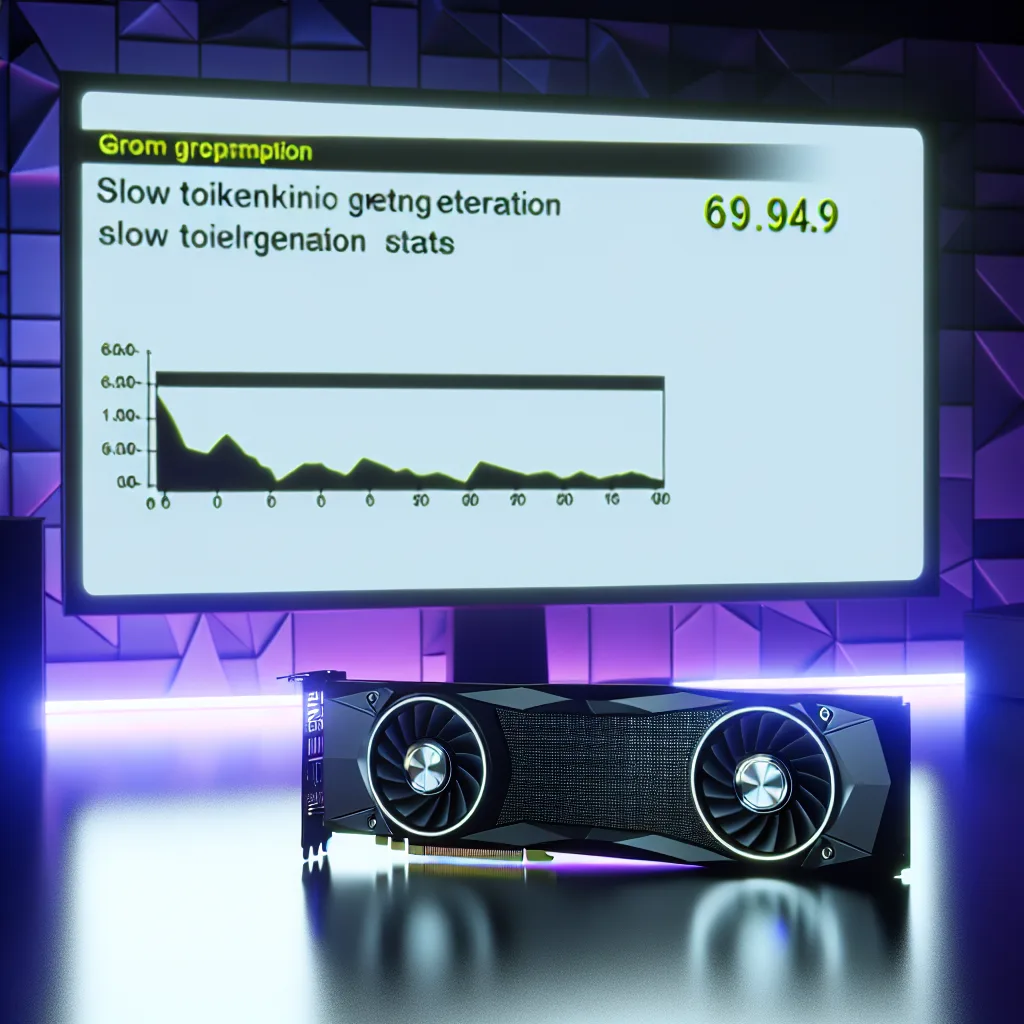Troubleshooting slow token generation on NVIDIA GPUs with Dolphin-2.6-Mistral-7B
If you’ve ever tried running AI models on your local machine, particularly using GPUs like the Nvidia 3080 Ti, you might have bumped into the frustrating problem of slow generation speeds. I recently experimented with the Dolphin-2.6-Mistral-7B model on Windows 11 inside WSL2, and despite my GPU being recognized and active, the token generation rate was stuck at just 3-5 tokens per second. This is far below what I expected, leaving me wondering: why is the generation so slow?
In this article, I want to share some insights on “slow generation AI” issues — what might cause them, and some possible ways to troubleshoot and improve your experience.
What is Slow Generation AI?
Slow generation AI refers to models that produce results at a very sluggish pace. For instance, when you ask a model to generate text based on a long prompt (say 800 characters) and allow it to produce up to 3000 tokens, a rate of only a few tokens per second feels painfully slow, especially on powerful hardware like a 3080 Ti.
Checking Your GPU Usage
A key starting point is to verify that your GPU is actively being used during inference. You can use the nvidia-smi tool to monitor your GPU’s memory and compute usage. In my case, 7GB out of 12GB were occupied, which confirmed the GPU was indeed recognized by the system and the model was leveraging it.
However, just GPU usage doesn’t guarantee speed. Here are some things that often cause slow generation:
- Quantization and Model Optimizations: Using 8-bit quantization (like
8bit quanti) reduces memory usage but can sometimes slow down processing because of extra overhead in computation. - Model Architecture: Some larger models are naturally slower, especially those not optimized for inference speed.
- Framework Compatibility: Running inside WSL2 on Windows can sometimes introduce latency or overhead compared to native Linux setups.
- Driver and CUDA Versions: Outdated or mismatched NVIDIA drivers and CUDA toolkits can bottleneck performance.
Tips to Improve Generation Speed
- Update your NVIDIA Drivers and CUDA Toolkit. Ensuring you have the latest versions compatible with your GPU can help improve performance. Check NVIDIA’s official site.
- Experiment with Different Quantization Methods. While 8-bit quantization is memory efficient, sometimes using 16-bit or full precision can speed things up depending on your GPU and model.
-
Consider Native Linux or Dual Boot. If WSL2 feels sluggish, running your model on a native Linux installation might provide better IO and compute times.
-
Reduce Prompt Length or Max Tokens Initially. Try smaller prompt sizes or token maximums to see if speed improves — this helps isolate if the model chokes on long inputs.
-
Check Model Versions and Alternatives. Some newer versions or forks of models are optimized for faster inference. Websites like Hugging Face have user recommendations and optimized checkpoints.
Final Thoughts
Slow generation AI is a common challenge many face while pushing powerful language models to their limits locally. While your GPU may be working, other factors like software setup, quantization choices, and environment (e.g., WSL2) play huge roles. If you’re patient and methodical in troubleshooting, you can often find tweaks that boost your generation speeds.
If you want deeper technical details, I recommend looking into NVIDIA’s official guides for GPU acceleration and WSL2 performance tuning, which can unlock better results on your setup.
For more insights:
– NVIDIA CUDA Toolkit Documentation
– WSL2 Performance Tips
– Dolphin-2.6-Mistral-7B model info
Hopefully, this gives you a better understanding of why your local AI model might suffer from slow generation and where to look to speed things up. Happy experimenting!
